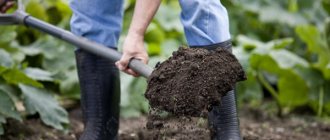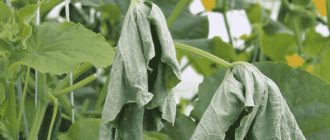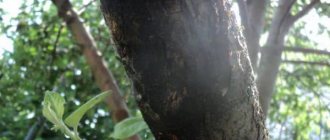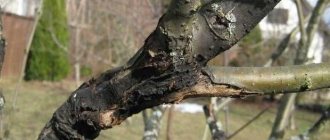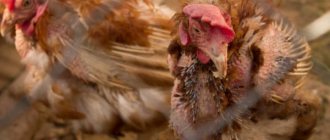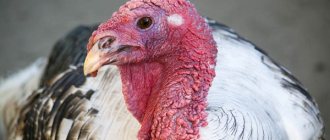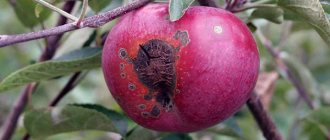Fusarium wilt of tomatoes is a fungal disease caused by the fungus Fusarium oxysporum (Schlecht.) f. sp. lycopersici (Sacc.), it has several forms and causes irreparable harm to the plant. The pathogen penetrates the cells of the cortex and the water supply system of the plant, germinates and disrupts water metabolism, which first contributes to wilting and then death of the plant.
The complexity of Fusarium wilt of tomatoes as a disease is that the disease lies inside the plant and damages the most important arteries that support life. Severe damage can destroy the plant and the harvest. To prevent this situation, it is necessary to carry out preventive measures even before sowing the seeds. Recognizing the first symptoms of a disease is an opportunity to defeat it without losing the harvest.
Signs of Fusarium wilt of tomatoes
Although the disease has symptoms similar to other tomato diseases, careful observation of the plant’s condition will help determine its characteristic features:
- change in color of leaf blades and veins from green to light green or yellowish;
- the petioles of the leaves are deformed, and the leaves themselves curl;
- in wet weather conditions, a white coating appears on the root system;
- the tops of the shoots wither and the leaves in the lower part quickly die off, and then the whole plant;
- on the cut, the stem vessels are dark brown in color, and white longitudinal grooves appear.
- the core of the stem dies.
How it spreads
The causative agent of the disease penetrates from the soil through damaged lateral roots of the plant, then germinates in the cells of the plant bark, capturing the vessels of the plant from leaves to stems and fruits. The mycelium of the fungus paralyzes the water supply system of the tomato, which impairs the supply of nutrition to the tissues.
As a result, the spread of the disease begins from below, and the tops of the shoots begin to wither, since the affected stem vessels are not able to provide them with a sufficient amount of juice.
Conditions for the development of the disease
- Duration of the disease.
Infection can occur through seeds, then the fungal spores germinate inside the tissues of the young plant, and at the beginning of fruiting, when the load on the plant increases, wilting begins. The same thing happens when infected through roots.
- Temperature.
The fungal spores are very stable and viable over a wide range of temperatures, but the most comfortable temperature for germination is from 20 to 28°C. Alternating rainy days with hot ones, with low night temperatures, is what is needed for the rapid growth of mycelium on young shoots.
- Humidity.
The pathogen progresses quickly in conditions of high humidity, but also when the soil dries out, followed by abundant watering, changes in humidity and temperature, favorable conditions are created for the development of the disease. In areas with close groundwater, the risk of disease increases. Constant relative humidity of 60-70% weakens the activity of pathogenic fungi.
Description of the disease
The causative agent of the disease, the soil fungus Fusarium, penetrates plant tissue through the root system. Pathogen spores gradually fill the space between the cells, the vessels through which nutrients move for the growth and development of plants.
This leads to malnutrition, dehydration and wilting of the crop.
In addition to the vessels, all above-ground parts of tomatoes, as well as the root system, are affected. At the same time, the fungus releases toxins that have a detrimental effect on the plant. All this ultimately leads to the death of culture.
The pathogen is active in soil and plant debris, from where it enters tomatoes through roots or mechanical damage. Withering of the bushes is the final stage, at which it is pointless to treat the vegetable. This is why it is so important to be able to recognize an infection by its early signs.
Symptoms and causes of tomato fusarium
An infected plant can be identified by several signs, including drying, curling and falling leaves. The bush begins to rot from below; after the small roots, large branches are affected. The plant withers and dies.
Vegetable culture can be caused by the following factors:
- planting density;
- excessive moisture;
- lack of light;
- contaminated seed;
- incorrect dosage of nitrogen fertilizers.
The fungus enters the plant through wounds and cracks. The sooner treatment begins, the greater the chance of recovery. It should be noted that fusarium blight on tomatoes cannot be eliminated. This incurable disease can only be stopped.
Diagnosing the disease is not difficult: just make an incision on the stem of the plant. If tomatoes are affected by Fusarium blight, brown and yellow streaks will be visible on the cut.
Modern methods of combating tomato fusarium
If characteristic signs of the disease are already visible, then the pathogen has managed to penetrate deeply into the conduction system and needs to be gotten rid of urgently. Not in all cases it is possible to save the plant. Sometimes it is better to remove it and burn it, and disinfect the soil or simply replace it with a new one.
When it comes to rare varieties of crops or those samples that have not suffered too much, you can try to revive them. The main thing with tomato fusarium is to know how to treat it.
Currently, several methods of treating fungal infections are used:
- agrochemical preparations for fusarium;
- biological products;
- folk methods.
The first category includes potent fungicides that have a systemic effect and penetrate deep into the tissues of all organs.
These include Fundazole (active ingredient Benomyl), Benorad (Benomyl), Vectra (Bromuconazole). Each remedy for fusarium is effective if all the requirements specified in the instructions are met. Biological products are often used by farmers who do not want to involve agrochemicals in growing crops. In this case, biological antagonists of Fusarium are relevant. According to studies, Pseudomonas fluorescens (bacteria) and Trihoderma lignorum (fungi) are the most effective. They form the basis of such drugs as Trichoderma Veride, Trichodermin, Planriz.
A biological measure to eliminate the disease is also an increase in the immunity of tomatoes. An effective remedy can be called “Immunocytophyte” - a tablet preparation. It is used for spraying three times per season.
Does it make sense to treat fusarium disease using traditional methods and how to treat tomatoes without pesticides? Indeed, some amateur gardeners are trying to solve the problem on their own. The methods are quite dubious, and in some cases dangerous. If we talk about mullein infusion, which is most often used in practice, it can provoke a glut of nitrogen, which can lead to a decrease in plant immunity to infections. The second option is to use wood ash. Its effectiveness has also not been scientifically proven.
Description of tomatoes
Tomatoes have been cultivated around the world for centuries, although this plant was not always grown for its edible fruits. It was once cultivated only as an ornamental crop. But over time, ripe tomato fruits became welcome guests in the diet. They began to be used fresh, added to salads, and used in the preparation of hot dishes and snacks. And there are countless recipes for winter preparations that use tomatoes.
Tomatoes are grown not only on an industrial scale; there is hardly a vegetable garden that does not have at least one bed with this vegetable crop.
Tomatoes in the garden
Thanks to the efforts of breeders, newer varieties of this vegetable crop appear every year, which are distinguished by good yield, different sizes of bushes, resistance to various diseases, high marketability and taste of ripe fruits, different colors of ripe tomatoes - from the usual red to yellow, purple or green.
You can grow different varieties of tomatoes in open ground, in greenhouses or greenhouses.
This crop is grown in most regions of our country using the seedling method. In this case, the seeds are planted at home in containers, after germination (after the appearance of a pair of permanent leaves), the seedlings are planted in separate cups.
After the seedlings have 5-6 permanent leaves and the soil in the garden warms up to 16-17⸰C, the plants can be transplanted into garden beds.
In the first time after transplantation, if spring frosts are possible, it is better to set up a greenhouse in the beds so that the young plants do not freeze.
Further care for this vegetable crop involves regular watering, loosening the soil while simultaneously removing weeds, as well as applying fertilizer. But even following the rules for caring for this vegetable does not always save you from diseases, and you have to fight them mercilessly so as not to lose part of the harvest, or even lose it completely.
Useful treatment tips
When identifying diseased plants, experts recommend:
- Move the diseased specimen to another location. When caring for it, use separate gloves and tools. Be sure to wash your hands thoroughly with soap after all procedures with such plants.
- First, you should work with completely healthy bushes, and then with diseased ones.
- Fertilize to strengthen the plant.
- After identifying and treating a certain disease, in the future do not forget about preventive treatments specifically against this type of disease. Healthy plants should also be treated.
- It is better not to use seedlings that are too diseased for planting, but to dispose of them.
There are folk recipes that help get rid of many tomato diseases:
- Spray the plants with this mixture - stir 100 g. baker's yeast in 10 liters of water.
- Grind 0.5 kg of garlic and leave in 3 liters for 5 days. Then 50 gr. dilute the resulting solution in a 10-liter bucket and add 50 g. crushed soap. Spray the seedlings with the resulting product.
- You can spray by mixing 1.5 cups of chopped garlic and 2 grams in 10 liters of water. manganese
Did you know? Most chefs (68%) prefer canned tomatoes when preparing dishes, as they have a richer aroma and taste. Preserved foods such as tomato ketchup and tomato paste contain much more of the natural antioxidant lycopene than fresh fruits.
Tilling the soil after infected tomatoes
- Disinfection.
Due to the fact that tomatoes are often grown in the same place, especially in greenhouses and greenhouses, disease prevention is especially important. Disinfection must be carried out twice:
- Structures, equipment, surfaces and plant residues are treated with a solution of copper oxychloride immediately after harvesting the fruits and left for 20-24 hours.
- After removing plant residues, it is recommended to remove 1-2 cm of soil. If this is not possible, comprehensive disinfection measures are carried out. The structures are treated with Bordeaux mixture or copper sulfate, the greenhouse is fumigated with sulfur, and the soil is dug up and treated with a fungicide.
- Digging.
In open ground, after harvesting plant residues, treat the soil with one of the fungicides and immediately dig up the soil so that spores are not spread. To improve health, green manure is sown, which is subsequently plowed into the ground.
Characteristic signs
Fusarium infection of tomatoes is possible at any stage of the plant’s life (both seeds and soil can be infected), however, the signs appear only at the time of flowering or fruiting:
- The first sign is yellowing, withering lower leaves;
- Then the leaves begin to turn yellow on top, first they droop, then dry out and become deformed;
- If you make a cut from the stem of a diseased bush, you will see that the vessels have acquired a brown color;
- If you keep the cut bush in a room with high humidity for 1-2 days, the white mycelium of the fusarium fungus will appear.
Tomato wilting due to fusarium blight can easily be confused with verticellosis, a disease that manifests itself with similar symptoms. It is possible to determine what is sick with tomatoes only by cutting the bushes. With fusarium, the vessels are dark brown, and with verticellosis, they are light brown. With fusarium, the tissue around the vessels is sometimes yellow or brown; with verticellosis, the color of the tissue does not change.
11.1. Reasons for appearance
In order for tomatoes to become sick with fusarium, one single condition must be met - the presence of the pathogen. Fungi can live in the soil, on the surface of gardening tools, in collected seeds or even in seedling substrate. And they do not interfere with the growth of tomato bushes until favorable conditions for the development of the disease are formed.
The following factors increase the risk of Fusarium wilt of tomato bushes:
- Dense plantings;
- Bad light;
- Shortened daylight hours;
- Under the bed lies underground water;
- The principle of crop rotation is not observed;
- Poor quality watering;
- Excess of chloride and nitrogen fertilizers in the soil;
- The site is located near industrial production.
11.2. Effective ways to fight
Summer residents use the following measures to combat Fusarium wilt of tomatoes:
- Prevention, including measures for disinfection and the creation of unfavorable conditions for the growth of fungus;
- Treatment with biological and chemical drugs.
The use of preventive measures helps to avoid wilting of tomatoes when affected by fusarium. And if symptoms of the disease do appear on several bushes, then they need to be removed by the roots to eliminate the source of infection. Treating them is ineffective. Therapeutic measures are permissible when the entire garden bed is sick. In this case, if you do not start an operation to save the bushes, you may lose the entire harvest.
What kind of disease is this
Fusarium is a dangerous fungal disease of tomatoes that is resistant to chemicals . Its distribution indicates errors in growing plants. The disease can be encountered both in greenhouses and in open ground in all climatic regions. It may take 2-3 weeks from the onset of the disease to the complete death of the plant.
How does it affect tomatoes?
The fungus attacks the vascular system of seedlings, as a result of which the roots and fruits begin to rot, and the plant itself begins to dry out. The photo shows that the disease spreads from bottom to top. The fungus can be found in the soil and enters the plant through damaged or small roots. As the disease progresses, rot appears on the root system, and fungi penetrate through the vessels into the stem and leaves.
The first sign of Fusarium wilt of seedlings is the falling of the lower leaves. However, this symptom is characteristic of many other ailments. Fusarium is accompanied by discoloration of the petioles and curling of the foliage.
Talkan - what it is, benefits and harms, recipes and reviews of use
Experienced gardeners have noticed that most often the disease affects plants grown in greenhouse conditions. However, if all conditions for tomato growth are met (temperature, humidity, lighting), it can be avoided. Fusarium wilt is also typical for seedlings grown year after year in the same place.
Fusarium wilt: description and photo
Fusarium wilt of tomatoes is a dangerous infectious disease caused by fungi of the genus Fusarium. The pathogen lives in the soil and infects plants through young roots or damage to the stem. The fungus is resistant to unfavorable environmental conditions, so it can survive in the soil for years.
The fungal disease has other names - dry rot and fusarium wilt. They were obtained due to the underlying symptoms of the infection. Tomatoes wilt, flowering deteriorates, foliage turns yellow and falls off. If you cut the stem, you will find a dark ring. This means that dry rot has already affected the root system and irrevocably destroyed the plant.
Young and weakened plants become victims of fusarium wilt . The disease develops due to:
- sudden temperature fluctuations;
- lack of nutrients;
- damage by insect pests;
- increased soil and air humidity.
The development of fusarium intensifies if tomatoes receive excess nitrogen fertilizer, or a large amount of phosphorus accumulates in the soil.
How to deal with the disease
Fungal infection quickly affects the crop, so you need to act immediately at the first sign. Recently, bioprotection agents have been increasingly used. They allow you to protect tomatoes without the use of chemicals.
Chemicals
The most popular among them are:
- Trichodermin - 20 g of the substance is dissolved in 10 liters of water, sprayed or watered on the plants.
- Glyocladin - used to disinfect contaminated soil. 1 tablet is buried 1 cm near the tomato bush. The top is covered with mulch and watered regularly. In the first year, treatment is carried out 2 times, starting from the second - 1 time.
- Pseudobacterin 2 is a preparation for watering seedlings after planting in a greenhouse or open ground. The consumption rate of Pseudobacterin working solution is 100 ml per affected plant.
Another effective remedy is Fitosporin . It is suitable for cultivating soil and spraying the above-ground parts of plants. Before sowing, planting material is soaked in its solution.
If the disease has severely affected the crop, you will have to use chemicals. Even before processing, carefully inspect the plants and remove the affected areas. Diseased leaves need to be burned. The following chemicals are used to spray surviving specimens:
- Bayleton – 1 g of the drug is diluted in 1 liter of water. Processing is carried out no more than 2 times. Spray plants in the evening or early morning.
- Quadris - for processing greenhouse tomatoes, use a 0.8-1% solution. The consumption rate in this case is 5 liters per 1 hundred square meters. Treatment is carried out no less than 2 weeks later.
- Fundazole - 1 g of the substance is diluted in a small amount of water. Next, the resulting solution is brought to a volume of 1 liter. Treat the affected bushes twice during the growing season.
Even chemicals are not able to completely rid tomatoes of fungus. They contain the spread of the disease for some time. That is why chemical protection agents are used before fruiting. After this, the tomatoes are collected and treated with potassium permanganate. The bushes are dug up and burned so that the infection does not spread further. Seeds are not taken from affected tomatoes, as they are infected with a fungus.
Folk remedies
For preventive measures and at the first signs of Fusarium wilt, folk remedies are used. They will help slow down the disease without the use of chemicals. For more advanced cases of fungal infection, they are not effective.
Mushrooms do not like alkaline environments. Physarium is also no exception, so wood ash is widely used for prevention. Tomato bushes are dusted with dry ash. An infusion is also prepared for watering the soil around the plants.
A glass of ash is poured into a bucket of water and mixed. Each bush is watered with the resulting solution.
The following folk recipes are also suitable for treating fusarium wilt of tomatoes:
- Chop the garlic and add water. The resulting product is infused for at least a day. The infusion is diluted with 10 liters of water. Spray tomato bushes.
- For preventive treatment, a mixture of whey is prepared. For 1 liter of liquid consume 20 drops of iodine. The resulting product is diluted in 10 liters of water.
- Spray the plants with milk. Add 20 drops of iodine and shavings of laundry soap to it.
In addition, the following actions will help slow the spread of the disease:
- reducing air humidity in the greenhouse, arranging drip irrigation;
- ensuring normal ventilation;
- thinning plantings, removing excess leaves from bushes;
- using mulch.
Treating infected bushes is always difficult. Experienced gardeners recommend taking care of planting protection in advance.
Provoking factors
Fusarium spores are carried by wind, birds, and insects over vast distances. It will not be possible to get rid of it once and for all. Fusarium will be brought to the site from near or distant neighbors.
Along with plant debris, it can feed on the tissues of weakened tomatoes. There Fusarium forms spores, then spreads to healthy bushes, penetrating into wounds or damaged roots, causing wilting. Stunted tomatoes have the highest chance of getting sick.
Fusarium wilt of tomatoes cannot occur on undamaged plants, even if there are infected bushes nearby.
Fungal infection, like gray mold and verticillium, penetrates soft tissues exclusively through the wound surface formed by:
- When pinching tomatoes, removing leaves under a brush that has begun to fill.
- Through vegetative organs gnawed or punctured by pests.
- At the time of transplantation, if the operation was accompanied by damage to the roots. Most often this occurs when the earthen coma is disturbed.
- During a pick, through a broken root tip.
- Tomato seedlings in cassettes often get sick with fusarium wilt. Especially if it does without picking or has outgrown it. The root breaks through the drainage hole and is damaged.
Fusarium wilt of tomatoes develops faster and is provoked by:
- High humidity. This favors the formation of spores.
- When watering with a hose, contaminated soil falls on damaged leaves and stems of tomatoes.
- Lack of crop rotation, poor soil and greenhouse cultivation.
- Acidic, sandy soils.
- Sudden changes in temperature.
- Violation of gas exchange in excessively dense soil or in the absence of ventilation of greenhouses.
- Tomato fusarium is often found on planting material. Seeds need to be treated.
- If weed control is carried out sporadically, and plant residues have been lying in the garden all winter, the risk of tomato infection with the Fusarium fungus increases many times over. Such an area will certainly become a breeding ground for tracheomycosis.
The higher the temperature, the faster fusarium spreads. That is why infection of tomatoes in a greenhouse is usually widespread, and the disease progresses so rapidly that sometimes it is not possible to harvest even the crop that has begun to ripen.
Recommended varieties
There are no varieties that are never subject to Fusarium wilt. But there are quite resistant varieties:
- Amaneta F1.
Indeterminate, early ripening variety with a strong root system for greenhouses.
- Macarena.
Mid-season, indeterminate, high-yielding variety for protected soil, has proven itself in extended cultivation.
- Raisa.
Hybrid, indeterminate, compact variety with a powerful root system for growing on any substrate in any type of greenhouse.
- Partner Semko.
Mid-late, determinate, hybrid salad variety for growing in open ground and film structures.
- Minaret F1.
The variety is semi-determinate, early, large-fruited, recommended for film greenhouses.
- Malika.
Hybrid, early ripening, large-fruited salad variety for greenhouses and open ground.
Signs of damage to tomatoes
Symptoms of fusarium wilt:
- the appearance of brown spots on the roots, and then a complete darkening of their surface;
- leaves turning yellow or pale green;
- curling of leaves, falling off of the bottom row;
- deformation of petioles;
- milky coating on the roots after rain;
- death of the plant.
Preventive measures
It is always easier to prevent a disease than to cure it. Fusarium blight of tomatoes is no exception to this rule. The list of preventive measures includes:
- compliance with crop rotation. If the garden area does not have a large area, the soil in the garden bed will have to be updated annually. The specified vegetable crop cannot be planted after potatoes, garden strawberries, chrysanthemums, phlox, and other plants from the Solanaceae family;
- disinfection of seed material. Seeds must be treated with fungicides and benzimidazoles. These include Benazol and Fundazol. In the room where the seedlings are located, the optimal temperature should be maintained (not higher than +25 ° C);
- cultivation of the land. After harvesting, the area must be cleared of all residues and dug up. In spring, the soil must be shed with a solution of copper sulfate or potassium permanganate (potassium permanganate). Fusarium can be prevented using limestone, dolomite flour, wood ash and sulfur;
- strengthening the immune system of tomatoes. This can be achieved with Trichodermin. To enhance the effect of this drug, experts recommend using liquid fertilizer Effecton.
A gardener should not forget about proper watering and microclimate. The latter applies to tomatoes grown in a greenhouse. In a protective shelter, air humidity should not exceed 60%. Particular attention should be paid to the characteristics of tomatoes. Early ripening varieties are less likely to become infected than other varieties. They are more resistant to sudden temperature changes. When choosing tomatoes for sowing, it is necessary to take into account the planting location, the climate of the region, and the properties of the soil cover.
Where do mushrooms get inside a tomato?
They live in the ground and are found almost everywhere. Especially a lot of them are collected in places where nightshades (tomatoes, potatoes, eggplants) have been growing for many years. This happens when growing in greenhouses if the soil does not change from year to year.
The wounds that the plant receives during pinching can serve as a source of penetration of pathogenic fungi into the plant’s body. They secrete waste products that dehydrate the tomato tissue and cause it to wilt. Gradually the roots of the plant die off and it disappears.
But maybe if you don’t shoot the tomatoes, they won’t become infected? Fusarium of plants finds other ways of penetration. And the density of unplanted plants only contributes to their rapid reproduction.
The fungus spores persist in the ground for several years. During the cold season, they are at rest, but always find food for themselves. For this purpose, dried or rotted plant remains are suitable for mushrooms.
When the air temperature rises above 20 degrees, the fungus wakes up and begins to multiply. It is especially active at high humidity. This process is facilitated by a large amount of fertilizers containing nitrogen.
Tomato fusarium can also be obtained through the seeds of infected plants.
They are transmitted when planting seedlings, weeding and contact with contaminated garden tools.
Stages of development
The infection affects tomatoes in the following stages:
- The roots suffer first. The fungus poisons young and tender roots with mitocoxins. The underground part rots and the apparently healthy plant falls to the ground.
- Gradually, the fungus moves higher and higher through the vessels of the stem. Tissue blockage occurs, the leaves wither at the base of the stem, become watery at the edges, and acquire a pale green or yellowish tint. If the humidity is high, then the leaf plates become covered with a whitish coating.
- The toxins completely destroy the plants and eventually they die.
What is sorrel: health benefits and harms, composition, application
The plant resists dry rot from several days to 2 months. At a temperature of +16°C, tomatoes die much faster. The development cycle of the disease is from 7 to 30 days, and depends on the composition of the soil, environmental conditions, age and variety of tomatoes.
Why is fusarium dangerous?
If you look at the description of this disease, it is dangerous precisely because it greatly damages the root system, and this, in principle, is the most dangerous thing for tomatoes. And all this because water and nutrition with useful elements occurs through the roots. As the fungus spreads both inside and outside the plant, it simply kills the plant and quite quickly. If treatment for the disease is not started immediately, then within a couple of weeks you can lose your entire tomato plantation.
But the difficulty is that fusarium tolerates chemicals very well, and it is also very difficult to cure because the fungus also spreads inside the plant, and sometimes it cannot be cured at all.
Treatment options
The problem of treating fusarium-affected tomatoes is the absence of signs of the disease at the initial stage. Obvious external changes in the condition of the bush are observed only at the middle stage of infection development, more often during flowering and fruiting.
Some gardeners do not try to treat fusarium and try to get rid of bushes affected by the fungus by removing them by the roots and disinfecting the soil. If you intend to save the harvest, you can try to save the tomatoes using biological preparations and chemicals.
Biological drugs
Biological preparations significantly reduce the consequences of damage to bushes by fusarium, but must be used in combination with chemicals, because have predominantly preventive properties rather than therapeutic ones.
Biological compounds have a beneficial effect not only on plants, but also on the soil layer.
Trichodermin, Baktofit, Fitosporin and Previkur are used to treat diseased tomatoes. The main conditions for their use are temperatures above 18 ° C and humidity within 65-70%. Dosage for root watering and foliar spraying is 20 g per 10 l. Consumption rate – 0.5 l per 1 m².
Chemicals
Chemicals, compared to biological preparations, are more effective means of treating fusarium in tomatoes. The condition for their use is 2-3 weeks before the expected harvest date.
Systemic fungicides that have proven themselves well in the fight against fusarium wilt of tomatoes:
- "Falcon". For spraying, make a working solution at the rate of 1 mg of the drug per 3.3 liters of water;
- "Fundazol". For irrigation, 10 g is diluted in 10 liters of water;
- "Vectra". For root watering and foliar spraying, prepare a mixture of 3 ml of suspension and 10 liters of water.
Contact chemicals such as Hom, Bordeaux mixture and Abiga-Pik do not treat fungal disease, because they are not able to eliminate the pathogen without penetrating deep into the cells during treatment.
Signs and similar diseases
Fusarium is insidious and dangerous . Inexperienced gardeners often confuse it with vertillus wilt (wilt), which develops very quickly (tomatoes die in 2-3 days). Symptoms of wilt resemble those of fusarium, but differ in the development cycle. Inadequate treatment leads to an even greater deterioration in the condition of the plants, as well as a significant loss of personal time.
Here are the main signs of dry rot:
- It appears only on stepchildren crops that have entered the fruiting stage.
- Fusarium develops from bottom to top . The first symptoms of the fungus can be found on the adult lower leaves. Leaf blades lose turgor, become yellow, and fall off. The disease continues to move to the next tier of the plant.
- Very often there is damage to one side . For example, the leaves of a tomato wither and turn yellow, and the side shoots only on the right side.
- Wilting of the tops . They look “exhausted”, but retain their natural color. It seems that the plant has not been watered for a long time.
- The conduction system is affected . When cut from a lifeless leaf or shoot, the tissue acquires a reddish-brown tint.
There are cases when tomatoes are affected by several types of fungus:
- fusarium wilt;
- fusarium rot of roots and root collars.
The following picture is observed: the root collar is covered with brown areas, the roots are covered with red-brown damage.
Attention! Fusarium can only be detected during flowering and fruiting of tomatoes. It is at these stages that Fusarium wilt gains momentum.
Treatment
The use of therapy is effective only in the early stages, when fungal spores have not yet completely clogged the plant vessels.
Use of chemicals
To help gardeners, various fungicides have been created that destroy the infectious agent. They are used 2-3 weeks before harvesting tomatoes, allowing time for the decomposition of harmful components.
Systemic fungicides (dosages are given for a ten-liter bucket of water):
- Vectra (sprayed on tomato leaves, used for watering, norm – 3 ml);
- Falcon (spraying, 3 mg of the drug);
- Fundazol (watering, dosage 10 grams).
Plants are treated in the first stages of the disease, then there is a chance of saving the tomatoes. Control measures by spraying with Bordeaux mixture, potassium permanganate or other contact agents are ineffective.
Use of biological agents
Opponents of the use of “chemistry” are recommended to treat tomatoes with biological preparations containing strains of beneficial bacteria. These bacteria are antagonists of pathogens, in addition, they have a beneficial effect on the soil composition.
Apply:
- Glyokladin (water tomato seedlings);
- Trichodermin (add the product to the soil mixture for seedlings, to the greenhouse soil), proportions: 2 grams per seedling, to the soil 1 kg per 10 square meters;
- Planriz (watering plants after planting in shelters or ridges);
- Pseudobacterin-2 (irrigation of tomatoes at the root).
Alirin-B and Gamair have a good effect, but only in the early stages of tomato infection.
Fusarium is a disease that affects tomatoes at various stages of development. The best plant protection is timely prevention and compliance with the rules of agricultural technology.
Natalia Severova
What is fusarium
Fusarium wilt of tomatoes or tracheomycosis is caused by Fusarium fungi. This saprophyte, living on rotting substances, affects roots, stems, leaves, and ovaries. The waste products of the fungus clog the vessels of tomatoes, first causing wilting and then death of the vegetative organs.
The source of infection is soil, untreated seeds, unharvested plant debris, and weeds. The causative agents of tracheomycosis wilt are always present in the soil - the fungus participates in the formation of humus.
Fusarium forms spores, with the help of which it spreads from diseased bushes to healthy ones. The incubation period can last from 7 days to a month - it all depends on the place of penetration of the infection into the tomato vascular system and external conditions.
The ideal temperature for the development of fusarium is 27-28° C. If it is below 20° or above 34°, the disease will be sluggish.
Tomatoes are more often infected with fusarium in the second half of the season, closer to harvest. But not always - infection can occur at any stage of development.
Advice from gardeners
The disease mainly affects plants grown in greenhouses. You can reduce the risk of disease by regularly ventilating the room after evening watering. It would be useful to equip it with a good ventilation system.
Pre-planting seed treatment is the key to plant health. The material must be treated with drugs belonging to the group of benzimidazoles, for example, “Fundazol” or “Benazol”. Disinfection is carried out two weeks before planting; 5-6 g of product will be needed per 1 kg of seeds. The drug is dissolved in water, after which the solution is poured into a spray bottle. Seeds placed in a container are sprayed and mixed. 20-30 minutes after the procedure, the material is scattered to dry and then placed into bags.
According to reviews from summer residents, the development of the disease can be avoided by carrying out additional treatment of the roots. The root system of the seedlings is dipped into the fungicide solution for a few seconds, after which they need to be dried a little and planted in the garden bed.
Pre-planting soil treatment can also protect against Fusarium wilt. For disinfection, you can use copper sulfate: 70 g of the product is dissolved in one bucket of water. Dolomite flour or chalk will also help neutralize fungi.
It has been observed that pathogenic fungi do not respond well to mulching. Most summer residents use straw for these purposes, but you can also try putting black film on the beds - the material inhibits pathogens.
After harvesting, the gardener needs to clear the area of vegetation and disinfect the soil. For these purposes, use lime, potassium permanganate solution or a mixture of ash and powdered sulfur.
Information about the disease
Fusarium wilt of tomatoes is a fungal disease. The fungus gets inside the bushes and begins to take root. As a result, it grows, fills the vessels of plants, clogging them with the products of its vital activity. Over time, flexi spores get into all parts of the plant, as a result, tomato bushes begin to wither.
The spores of this fungus can remain in the soil for years, especially in large numbers in places where vegetable plants of the nightshade family have been grown for many years in a row without following the rules of crop rotation. Spores enter tomatoes through small wounds and cracks in stems and shoots.
Note! Most often, the fungus gets inside the stems after removing the stepsons, if this procedure is carried out carelessly. Infection of tomato bushes can occur at any stage of plant development, but fusarium reaches its peak of development during mass ripening of fruits
At this moment, the plants are weakened, because all their strength goes into ripening the tomatoes, and there is no longer any left to fight the disease
Infection of tomato bushes can occur at any stage of plant development, but fusarium reaches its peak of development during the mass ripening of fruits. At this moment, the plants are weakened, because all their strength goes into ripening the tomatoes, and there is no longer any left to fight the disease.
If Fusarium wilt of tomatoes is established, treatment is almost impossible, it is not possible to save diseased plants, it is only possible that the fungal spores will spread to healthy tomatoes.
The main reasons contributing to the development of the disease:
- violation of crop rotation rules;
- dense plantings;
- too large a difference between day and night temperatures with high humidity;
- too much fertilizer in the soil, especially those containing chlorine;
- groundwater comes too close to the ground surface;
- the garden plot is located next to industrial enterprises;
- decreasing daylight hours;
- violation of the watering regime, drying out of tomato roots;
- insufficient lighting.
As a result, the foliage changes its natural color, it becomes faded, gradually withering. The veins also become lighter. Gradually, the foliage curls, and the shape of the petioles also begins to change. Over time, damaged leaves begin to fall off. At the base of the shoots, when cut, they become brown in color. The root collar becomes brown - a coating of fungal spores forms on it.
Fusarium wilt can be highly contagious
If you do not start fighting the disease, the disease also affects the upper part of the plant. This is a description of the main signs of tracheomycosis (fusarium) wilt of tomatoes.
Fusarium wilt can often be observed in tomato seedlings. Treatment in this case, as in adult plants, is useless. There are no medicines or folk remedies against this disease. The only measure to combat fusarium disease is to remove diseased plants. And it is better to spill the place where they grew with a weak solution of potassium permanganate.
Diseased plants are removed by the roots and immediately burned. It is impossible to leave diseased tops in the garden or put them in a compost pit, as the disease will subsequently spread further throughout the site.
Important! If you get rid of diseased tomato bushes in time, you can keep the rest of the plants and the harvest as a whole healthy. Often, some measures are used to slow down the activity of the fungus before harvesting, and then diseased plants can be safely destroyed
Often, some measures are taken to slow down the activity of the fungus until harvest, and then diseased plants can be safely destroyed.
In greenhouse conditions, the following activities are carried out for this purpose:
- provide normal ventilation in closed ground conditions;
- reduce the density of plantings, remove specimens that are too heavily affected, and remove excess foliage from healthy bushes;
- reduce the humidity in the greenhouse, watering is done by sprinkling, and mulch is applied under the tomato bushes.
A number of preventive measures should also be taken to reduce the risk of this disease:
- follow the basic rules of crop rotation, plant tomatoes in one place no more than once every three years;
- in greenhouse conditions, significantly reduce the difference between day and night temperatures;
- maintain humidity in closed ground no more than 60%;
- seed material must be treated before planting;
- destroy all tops after harvesting, without leaving them in the garden or on the site.
If there have already been cases of this disease occurring on the site, in the future varieties and hybrids of tomatoes that are resistant to fusarium should be planted.
Agrotechnical measures
- cleaning and destruction of all plant debris;
- disinfection of soil, all elements of greenhouses and equipment;
- pre-sowing treatment of seeds with disinfectants;
- deep autumn and spring digging of soil;
- prevent damage and erosion of roots and carry out hilling of seedlings in a timely manner;
- disinfection of hands and tools during pinching;
- compliance with crop rotation and selection of predecessors.
Timely implementation of preventive measures and correct agricultural technology will save plants from insidious diseases and obtain a high-quality tomato harvest.
Treatment of fusarium with chemicals
Tomato fusarium is not difficult to defeat with the help of well-known chemicals, and modern fungicides even more so show very high activity against the fusarium fungus. Let's look at chemicals from simple to complex:
- boric acid – 1 tsp. powder is dissolved in a bucket of water. The solution is watered at the roots of the plants;
- lime - in the fall, add 100 g of lime per 1 m2;
- Trichodermin is a biofungicide that is effective against many fungal plant diseases. Its analogue is Gliocladin. Trichodermin can be applied to the soil in powder form before planting seedlings, or the soil can be spilled with a solution of this drug. Vegetating plants can be sprayed every two weeks. In addition to Trichodermin and Glyokladin, the biofungicides Fitosporin M and Alirin B, Baktofit, Gamair, Pseudobacterin-2, Sternifag, Trichoderma Veride are effective;
- Quadris is a highly effective fungicide against a complex of fungal diseases of tomatoes in open and protected soil;
- Optimo is a highly effective modern drug against the rot complex;
- Previkur Energy - water under each bush with a 0.15% solution of the drug;
- Bayleton - diseased plants are sprayed, observing a waiting period of up to 20 days - cannot be sprayed less than 20 days before harvesting;
Fusarium of plants (garden)
Fusarium blight of wheat
Pathogens of the Fusarium group can infect both ears and roots of wheat.
Fusarium head blight is dangerous for all grain crops: a week after infection or a little later, an orange-pink mass of conidia appears on the ears of cereals, capable of being spread by the wind over considerable distances. Ascospores also persist on plant debris, becoming a source of infection for the future crop. Epidemics of fusarium head blight regularly occur in those seasons when the weather is humid and warm during the heading period. In these cases, crop losses can range from 20 to 50%, and eating contaminated grains leads to the accumulation of very dangerous mycotoxins in the human body.
Fusarium root rot is caused by members of a group that persist in the soil for many years, but are easily spread by wind, water and infected seed. Infection occurs during seed germination and during their further growth: pathogens penetrate the roots and enter all surface tissues. Conditions that depress plants contribute to the development of the disease. Signs that wheat is infected with root rot are low germination of seed, discoloration of plants, their slow growth, low weight and, finally, dark, almost black, destroyed wheat roots. Crop losses from Fusarium root rot can range from 5 to 30%.
Fusarium of tomatoes
Fusarium wilt of tomatoes is especially dangerous in monoculture greenhouses. The disease affects the vascular system of tomatoes, penetrating into them from the soil through the growing points of the lateral roots. Subsequently, the mycelium spreads through the vessels of stems, petioles, stalks and fruits, even infecting tomato seeds. The incubation period can last from 7 to 30 days.
Tomato diseases and their treatment
External symptoms of tomato fusarium blight are similar to those of verticillium wilt, but leaf chlorosis with fusarium blight is more pronounced. The disease begins from the lower tier of leaves and gradually rises upward, covering the entire bush. The first signs are lethargy of the tips of the shoots, followed by deformation of the petioles and curling of the leaves. If you cut the stem of an affected plant, you will see that its blood vessels have turned brown. Darkened vessels can be seen even through the covering tissue. The leaves of tomatoes affected by fusarium blight turn pale or yellow, and the veins on them become discolored.
Fusarium blight of eggplant
Fusarium wilt on eggplants usually appears during the flowering period. Eggplant leaves turn yellow, wither and dry, and the process begins from the lower tier, and then gradually covers the entire plant. Browned vessels are visible on the cut of the stem, and a pink coating forms on the roots of the plant. Fusarium infection of eggplants occurs through seeds or soil, in which the fungus can survive for more than 10 years. The infection enters the plant through root hairs when the root system is mechanically damaged. Affected plants may not die until the very end of the growing season, but they are significantly stunted in growth, they produce few fruits, and they are much smaller than the fruits on healthy bushes. Fusarium wilt of seedlings is often accompanied by root and basal rot. The development of the disease is favored by increased soil acidity and temperatures above 25 ºC.
Fusarium blight on cucumbers
Fusarium wilt of cucumbers is common both in open and closed ground, but for greenhouse cucumbers it is much more dangerous. The first signs of the disease are wilting of the tips of the shoots and individual leaves, which is accompanied by rotting of the root part of the stem. During the flowering period and at the beginning of fruit formation, the roots and root collar of the affected bushes turn brown, the bark cracks and begins to rot. The vessels of the stem also acquire a brown tint, and in damp weather a pink coating of conidia forms on the lower part of the stem. Infection occurs through root hairs and wounds on the roots, and this makes it difficult to treat fusarium blight on cucumbers, since you will notice signs of the disease when the vascular system is already affected. The main source of infection is soil, in which fusarium pathogens can be stored for a very long time. Intensive development of the disease begins when the air temperature rises above 10-15 ºC.
Cucumber diseases and their treatment
The development of root rot of cucumbers, also caused by fungi of the Fusarium group, is facilitated by sharp daily temperature fluctuations, prolonged cold spells up to 13 ºC and below, high air humidity (above 90%) and soil (above 80%), poor lighting, and soil pH within 5 -7.6. This disease is called rhizoctoniasis. Its successful development can result in the death of 60-80% of seedlings, and cucumber yield losses reach 23-38%.
Fusarium potato
Fusarium wilt affects potatoes at different stages, but most often during the flowering period. The disease develops in patches, intensifying in the hot season, when intense evaporation of moisture occurs. The disease is determined by the following signs: the upper leaves on the bushes become lighter, anthocyanin color appears on their edges, and over time the leaves wither and droop. Potato stems in the root zone turn brown, and in conditions of high humidity they begin to rot and become covered with an orange or pink coating. A cross section of the stem shows that individual vessels or the entire vascular ring have acquired a brown tint. The affected plant withers and dries out in just a few days.
During storage, dry fusarium rot develops on potatoes, which begins to spoil the tubers from the stolon part. They are covered with slightly depressed grayish-brown spots, the pulp under which dries, becomes rotten, and voids form in it, which are filled with mycelium. Yellowish, pinkish or whitish pads appear on the surface of the tubers. Sick potatoes sprout thread-like sprouts. The infection quickly spreads to neighboring tubers.
Fusarium of garlic
Garlic fusarium, or bottom rot, is one of the most dangerous diseases that affects both garlic and onions. More often it manifests itself in climates with hot summers and warm, mild winters. In such areas, yield losses of onion crops due to fusarium can reach 70%. The situation is complicated by the fact that garlic can be affected not by one or two, but by eight pathogens of the Fusarium group, each of which has its own degree of activity, depending on chemical and climatic conditions.
Infection occurs through soil, irrigation water, plant residues from last year's harvest, and diseased planting material - which is why it is recommended to reject damaged segments when sorting. Garlic can become infected with fusarium both during the growing season and during storage at temperatures from 13 to 30 ºC in conditions of high humidity. The optimal temperature for the development of infection is 22-23 ºC. Signs of garlic disease with bottom rot are:
- pink bloom in the leaf axils and brown stripes on the feathers;
- rotting and death of roots;
- softening of the bottom, which becomes watery, and then white, yellow or pink mycelium appears on it;
- formation of pink pads between garlic flakes during storage;
- mummification of stored heads.
Fusarium in cabbage, fusarium in peppers, fusarium in corn, sunflower, peas, soybeans and various cereal crops can also be found in open ground and in greenhouses.
- Caring for begonia at home - difficulties
Fusarium on flowers
Fusarium aster
Fusarium attacks asters during the formation of buds or at the very beginning of flower opening. The leaves on the affected flowers curl, the buds droop, oblong brown spots appear on the stems, and brown stripes appear in the area of the root collars. On the stems affected by fusarium, the tissues are torn, a coating of mycelium or tiny pinkish pads appears on the root areas, asters stop growing and quickly wither.
Fungi penetrate the plant through the roots and move at lightning speed through the vascular system, disabling it.
Fusarium lily
Lilies are affected by fusarium through the roots in places of mechanical damage. Then the pathogens spread through the vessels throughout the plant. The infection is carried by nematodes and some types of gnawing insects; in addition, fungal spores are carried by wind and raindrops. Affected lilies experience rotting of the roots and bottom, from which dead tissue falls out, forming voids in the bulb. Rot can be found in the outer and central parts of the bulb, at the base of the flower stem. Yellow-brown spots and depressed sores appear on the bulb. High humidity and heat promote the development of the disease.
Fusarium gladioli
There are no Fusarium-resistant varieties of gladioli.
Gladiolus corms are most vulnerable immediately after they are removed from the soil and after planting. Activation of the pathogen can be caused by excess nitrogen in the soil, too dense planting, heavy soil in combination with high humidity and high temperature. In gladioli affected by fusarium, the roots develop poorly, the leaves become thinner, lengthen, bend, and subsequently turn yellow and dry out; Depressed red-brown spots appear on the corms. Sometimes it is impossible to determine by the appearance of the corm that it is infected with fusarium, but after planting the diseased specimen does not germinate or produces deformed shoots, which subsequently die off the roots and turn yellow of the leaves: first the tips of the lower tier turn yellow, and then the yellowness spreads throughout the entire leaf blade and becomes to the upper tiers. As a result, the affected gladiolus looks like it has dried out.
During storage, diseased corms infect nearby healthy planting material.

